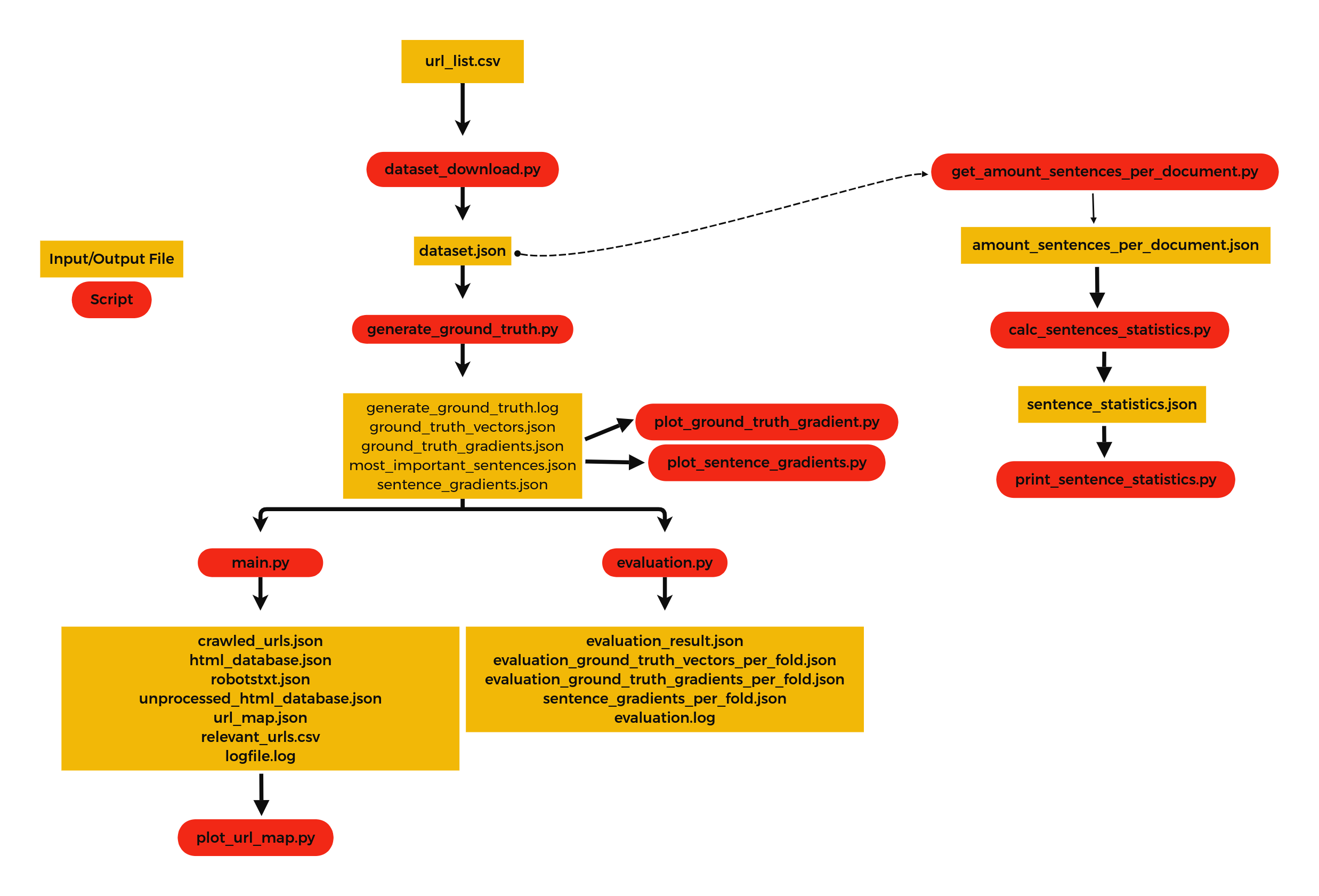This repository hosts the code used in the paper ThreatCrawl: A BERT-based Focused Crawler for the Cybersecurity Domain [1], which was originally a master's thesis by Mike Schmidt.
[1]: Kuehn, P., Schmidt, M., Bayer, M., & Reuter, C. (2023). ThreatCrawl: A BERT-based Focused Crawler for the Cybersecurity Domain (arXiv:2304.11960). arXiv. https://doi.org/10.48550/arXiv.2304.11960
This project uses Python 3.11. All requirement can be installed in your environment using
pip install -r requirements.txt
ThreatCrawl comes pre-configured with a seed file, a blacklist, and a ground truth file. To run the crawler, simply execute
python main.py
The configuration file config.py contains all configurations for the crawler, including the path to a seed file.
The default configuration is
DEFAULT_CRAWL_DELAY = 0.5
NUM_RETRIEVER_THREADS = 1
NUM_EXTRACTOR_THREADS = 1
CUSTOM_USER_AGENT = "https://peasec.de/peasec-crawlbot/"
CRAWLING_LIMIT = 100
DIAGRAMM_MAX_URL_LENGTH = 30
GROUND_TRUTH_VECTORS_FILE = "assets/20221207_223612_ground_truth_vectors.json"
SEED_FILE = "assets/20221204_233927_seed.csv"
A blacklist is used to exclude certain domains, like youtube.com, from the crawling process. The blacklist is defined in blacklist.json.
An overview over all scripts and what files they produce/use can be seen here:

To create a custom ground truth file, dataset_download.py and generate_ground_truth.py need to be executed.
All input files are hard-coded and need to be changed in the according python files.
The basic architecture and how the modules work with each other can be seen here:

A detailed documentation of all files can be found here: Documentation
If you make use of ThreatCrawl in your work, please cite the following paper:
@misc{kuehn2023threatcrawl,
title={ThreatCrawl: A BERT-based Focused Crawler for the Cybersecurity Domain},
author={Philipp Kuehn and Mike Schmidt and Markus Bayer and Christian Reuter},
year={2023},
eprint={2304.11960},
archivePrefix={arXiv},
primaryClass={cs.CR}
}
- Philipp Kühn
- Mike Schmidt
- Markus Bayer
- Christian Reuter
This work was supported by the German Federal Ministry for Education and Research (BMBF) in the project CYWARN (13N15407) and German Federal Ministry of Education and Research and the Hessian Ministry of Higher Education, Research, Science and the Arts within their joint support of the National Research Center for Applied Cybersecurity ATHENE.
MIT License
Copyright (c) 2023 Philipp Kühn
Permission is hereby granted, free of charge, to any person obtaining a copy of this software and associated documentation files (the "Software"), to deal in the Software without restriction, including without limitation the rights to use, copy, modify, merge, publish, distribute, sublicense, and/or sell copies of the Software, and to permit persons to whom the Software is furnished to do so, subject to the following conditions:
The above copyright notice and this permission notice shall be included in all copies or substantial portions of the Software.
THE SOFTWARE IS PROVIDED "AS IS", WITHOUT WARRANTY OF ANY KIND, EXPRESS OR IMPLIED, INCLUDING BUT NOT LIMITED TO THE WARRANTIES OF MERCHANTABILITY, FITNESS FOR A PARTICULAR PURPOSE AND NONINFRINGEMENT. IN NO EVENT SHALL THE AUTHORS OR COPYRIGHT HOLDERS BE LIABLE FOR ANY CLAIM, DAMAGES OR OTHER LIABILITY, WHETHER IN AN ACTION OF CONTRACT, TORT OR OTHERWISE, ARISING FROM, OUT OF OR IN CONNECTION WITH THE SOFTWARE OR THE USE OR OTHER DEALINGS IN THE SOFTWARE.